ARTICLE AD BOX

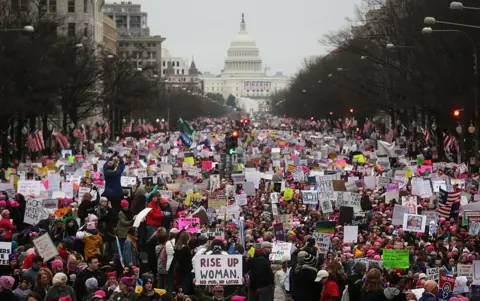 Getty Images
Getty Images
The first Women's March brought the largest single-day protest in US history
As protesters gather in Washington DC on Saturday for this year's Women's March, Vanessa Wruble, one of its founders, will be 2,500 miles away, at her farm in the Californian desert.
"I didn't even know it was still a thing," she told the BBC from her five-acre animal sanctuary near Joshua Tree, which features a zebra, mini cows and horses, peacocks and chickens.
Eight years ago, on the eve of the first Women's March, Wruble had been consumed by it. In the aftermath of Donald Trump's surprise 2016 victory over Hillary Clinton, Wruble, along with a handful of other female activists, scrambled to pull together a mass protest against the newly elected president.
"We basically did not stop, we did not sleep," Wruble said. "It felt like we were doing something important."
The January 2017 march became the largest single-day protest in US history, bringing an estimated 500,000 people to DC, and drawing millions to sister marches across the country. And in the months that followed, the Women's March organisation developed into the most visible arm of the so-called "resistance" - a loose coalition of grassroots progressive groups, never-Trump Republicans and Democratic leaders who opposed the 45th president and his agenda.
The resistance was angry, and it was motivated. The movement was widely credited with helping flip control of the House of Representatives from Republicans to Democrats in the 2018 midterm elections and for mobilising hundreds of women to enter politics across the country.
But in the wake of Trump's decisive win against Vice-President Kamala Harris in November, much of that energy has dwindled, spurring questions about the resistance movement's failures as well as its future. Activists and Democrats are also reckoning with the reality that the votes of millions of women helped put Trump back in the White House.
A sense of solidarity
The first march had come together at an impressive clip, transforming from a couple of disconnected Facebook posts from women calling for a protest into a blueprint for a national movement within weeks.
By 21 January, hundreds of thousands of people were pouring into the nation's capital, bringing crowds nearly three times the size of Trump's inauguration the day before. In Washington and at coordinated events across the US, women carried signs railing against Trump and sported pink knit "pussyhats" - a pointed reference to the Access Hollywood tape in which Trump bragged about grabbing women's genitals.
"I had never seen anything this crowded, you could barely move," said Sharon Baseman, a Democratic activist in Michigan who travelled to DC for the 2017 march. "It was overwhelming and it was inspiring."
In the years that followed, the Women's March remained the face of the fight against Trump's Make America Great Again (MAGA) agenda. The movement helped unite the Democratic Party against Trump, a strategy enabled them to retake the White House in 2020.
The torrent of activists who had been primed by the Women's March turned out for other causes, too: #MeToo demonstrations, the March for Our Lives protest against gun violence and the confirmation hearings for Supreme Court Justice Brett Kavanaugh in 2018 as well as the nationwide racial justice protests in the summer of 2020 over the police killing of George Floyd.

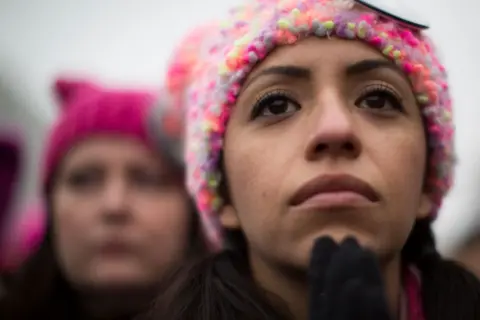 Getty Images
Getty Images
The early Women's Marches gave a sense of solidarity for those reeling from Trump's first win
The first march gave Democrats a sense of solidarity, and a feeling of wanting to do more, said Dana Fisher, a professor of sociology at American University and author of American Resistance, from the Women's March to the Blue Wave.
"The 2017 march activated a ton of left-leaning people who had never done anything political before. They paid attention, and they went to town hall meetings, and they joined different organisations," Professor Fisher said. "People got the sense that they weren't alone."
And experts say that engagement carried over to the 2018 midterms, when a record number of female candidates - most of them Democrats - ran for Congress.
Women made "monumental gains" after 2017, according to Kelly Dittmar, director of research at the Rutgers Center for American Women and Politics.
"There was a record number of women running for and winning office across levels of office," she said, "that has led to a record level of women's representation, which largely sustains itself".
A march without purpose
The Women's March this year has been rebranded as the People's March, co-hosted with a number of other progressive organisations including Planned Parenthood, National Women's Law Center and Sierra Club.
Tamika Middleton, the managing director of the Women's March, said Saturday's march was focused on building a coalition, adding that those in the progressive movement needed to come together like they did in 2017.
"We're seeing attacks on women, on reproductive rights, on LGBTQ folks… and we're realising that we really have to build some coordination across the movement to build the kind of mass movement that can fight back," she said.
So far, there is no sign that Saturday's event will match the magnitude of 2017. Organisers say they expect around 50,000 people to show up - a fraction of the attendance at the initial protest.
"I haven't heard anything about the Women's March this year, I didn't know it was happening," said Amanda Litman, co-founder and president of Run for Something, a non-profit launched in 2017 that supports first-time progressive candidates running for local and state office.
"There are valuable questions to be asked, like what is the purpose of a march this time around?" she said. "It is a tough case to make right now."

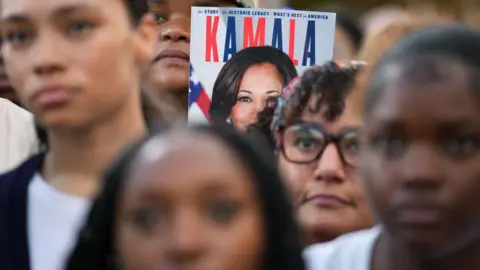 Getty Images
Getty Images
Harris's loss to Trump has left many Democrats feeling leaderless
The march itself has become something of an afterthought. What was once a watershed moment of defiance at the outset of the first Trump administration has seemingly faded from view.
"I think you'll find there really is not the appetite to march. I also think that it would be ineffective to march," said Wruble, one of the early founders. "We need to look at what we're doing and reassess how we go about doing it."
Wruble was pushed out of the Women's March soon after its first year, later saying her Jewish heritage played a role in that. Her exit was part of a raft of internal conflict that roiled the organisation from the start. The original co-chairs, Linda Sarsour, Tamika Mallory, Carmen Perez, and Bob Bland, have since left the group. They did not return the BBC's request for comment.
But the broader problem, according to activists and Democrats, is that the central premise of the resistance movement went unfulfilled.
After all, as protesters gather this weekend, Donald Trump will arrive in Washington to kick off celebrations for his inauguration. And he will be sworn in as president on Monday on the back of a decisive win (he lost the popular vote in 2016, but narrowly won it last November).
The incoming president will also preside over a government firmly under his party's control, with Republicans holding narrow majorities in both the House and the Senate.
Trump's November victory was helped by continued Republican gains among working-class voters, including black and Latino men. And despite pre-election discussion of a possible landslide for Harris among female voters, Trump also made inroads among white women, especially working-class women.
Ms Dittmar said that while the commonly accepted narrative was women would continue to drift away from Trump, in fact, among non-college educated white women "that support for him was just being affirmed, it got stronger".
Trump has won a majority of white women voters in all three elections he's contested, following a pattern set by every Republican presidential candidate since at least the 1990s.
But for many who oppose Trump, it is striking that he did so this time despite a series of new factors they hoped might doom his candidacy: his role in ending the national right to abortion; a jury finding him liable in a civil trial for sexually assaulting columnist E Jean Carroll in the 1990s; and a re-election campaign which saw misogynistic attacks on his opponent.
Rebecca Gau, a 53-year-old executive director of an education non-profit in Arizona, had been a loyal Republican until Trump's ascension, casting her first vote for a Democrat in 2020 for Joe Biden and again in November for Harris.
Ms Gau said she thinks Democrats focused too heavily on abortion rights during the election over kitchen table issues like the economy, which exit polls showed was a primary concern of voters.
Some of the fear and uncertainty about what a Trump administration might do was also missing this time around, she added, giving voters permission to prioritise other concerns, like the grocery prices and border security.
"We've been through all that before, and the sky didn't fall," she said of Trump's first administration.

 Getty Images
Getty Images
White working class women once again went for Trump
Democrats, too, have been muted in their response to Trump's election, with the party divided on how to confront the president-elect and his allies after campaigning for months that he was an existential threat to democracy.
Some congressional Democrats have sought to work across the aisle, with dozens joining Republicans last week to support a hardline bill on undocumented immigrants. A group of Democratic senators recently released a video that proclaimed, "we are not here because of who we are against".
Even California Governor Gavin Newsom, who has repeatedly clashed with Trump over the years and has already vocalised plans to shield his state from federal intervention, has taken a more conciliatory tone in recent days in the wake of devastating wildfires there.
"We're a little leaderless right now, which is hard," said Littman, of Run for Something. "We're in disarray because there's nothing to be in array behind."
Life after the Women's March
For Wruble, a break from politics came long before November's loss.
In 2022, struggling with burnout after years of organising, Wruble moved west. She gave up her rent-controlled apartment in Brooklyn and set up camp in Joshua Tree permanently, slowly constructing her farm, Kaleidoscope Desert.
She shows no signs of wanting back in. The farm takes up most of her focus. During our interview earlier this month, she was interrupted several times by her ranch hand asking questions about the various animals.
"We need more dog food in the house," Wruble said after one such interlude. "These are the kind of problems I deal with now."
But for other supporters of the Women's March who are still in the fight, Saturday's event brings a sense of optimism in a moment of despair.
"My friends who are super progressive and were devastated after the election are in a mode of, the only thing we can do is show up and not be quiet, and not let people think that all women support Trump," she said.
But, she said, the march itself will do little to pull in the women who did cast a ballot for him.
"Doesn't mean you shouldn't do it," she added, "but it's not going to draw them back".

 3 months ago
26
3 months ago
26

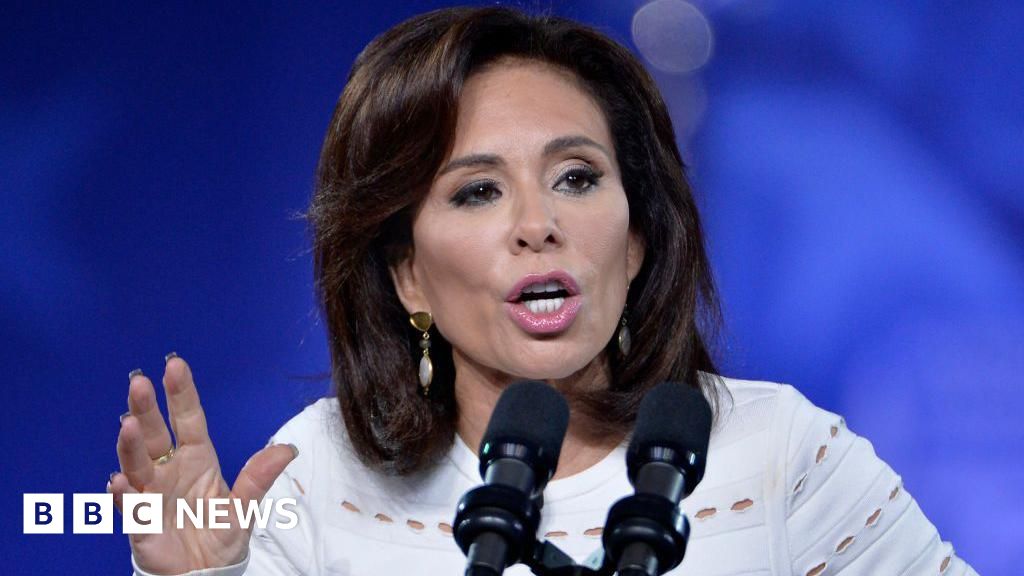
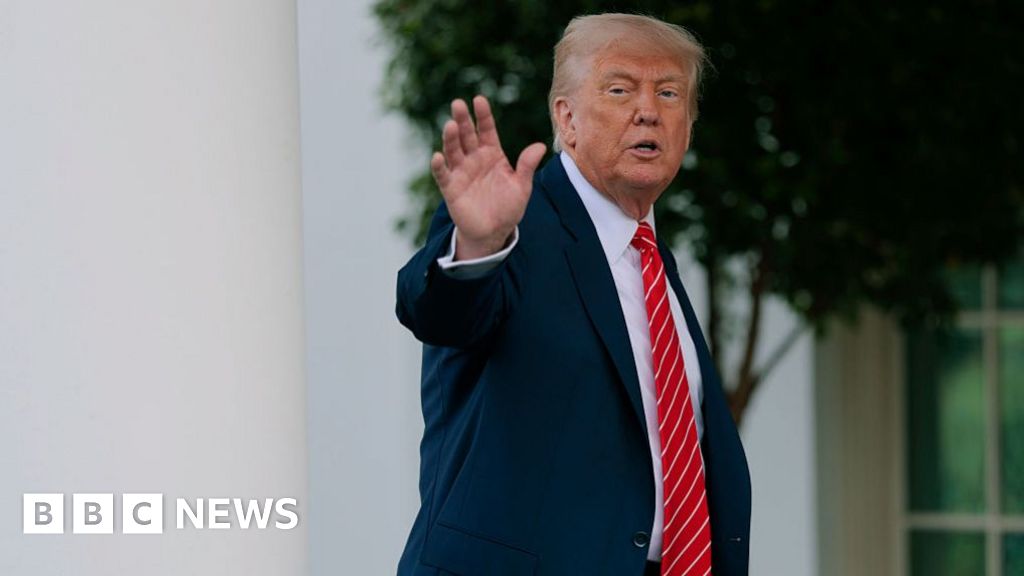





 English (US) ·
English (US) ·